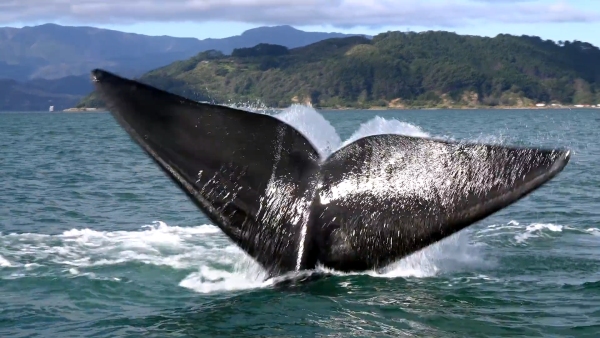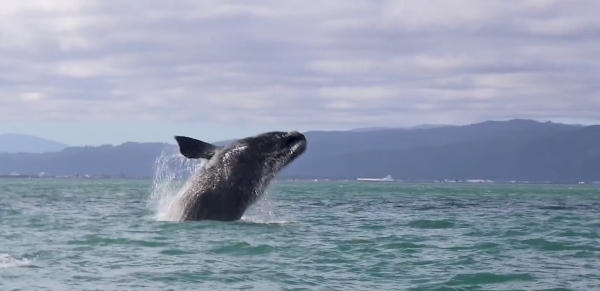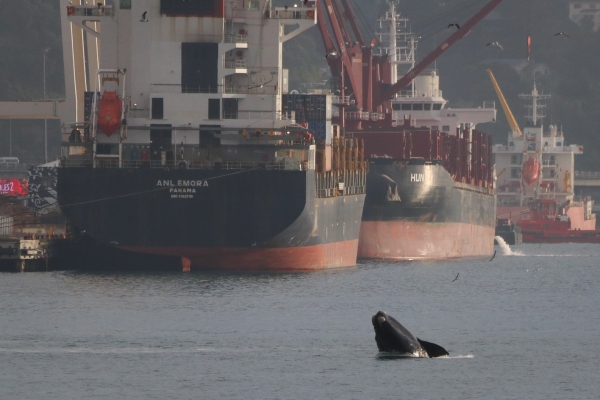Wellington’s whale may be a sign they are returning to their historical habitat, says NIWA.
The whale has been in Wellington Harbour for the past week delighting locals with its regular breaching close to shore. Meanwhile, University of Auckland marine science PhD student Victoria Warren has been involved in analysing some of the data recorded in Wellington Harbour by NIWA scientists last week.
She says southern right whales undertake annual migrations, swimming north from Antarctica. A breeding population is known to congregate around the Auckland Islands each year and the whales have also been recorded around the New Zealand mainland in increasing numbers.
“It may be a sign of a recovering population following the decimating impacts of commercial and illegal whaling during the 19th and 20th centuries,” she says.
A skin biopsy of the whale was also obtained last week in a collaboration between NIWA and the Department of Conservation. However, results – which will be able to determine its sex – are not expected for some time and will be undertaken by the University of Auckland.
“Until the results are received, it is unclear whether the whale is male or female,” Ms Warren said.
Speculation last week that it is male due to its activity near the surface and regular breaching, possibly to attract females, was premature.
“Male whales may undertake these activities to attract females or intimidate other males, but there is no need for a southern right whale to do this. Female southern right whales mate with multiple males, and the male that produces the most sperm is usually the one that fertilises the egg,” Ms Warren said.
On the breeding grounds, southern rights are generally active at the water’s surface as they prefer water depths only slightly deeper than their own body depth. Ms Warren said the aerial activities of the whale in Wellington Harbour should not be cause for concern.
NIWA also deployed acoustic equipment in the harbour to record any sounds made by the whale which could indicate its gender. Southern right whales are a vocal species, but a gunshot sound they make is primarily produced by males. The gunshot is a broadband, short duration sound that travels through water. Scientists say while females also produce gunshot sounds they are less common and quieter than those of males.
Seventy minutes of acoustic data were recorded by NIWA between noon and 3pm last Wednesday during which the animal was within about 100m of the boat.
Three recordings were made of sounds, one of which may be an “upcall” and the other two “downcalls”. Upcalls and downcalls are different types of communication made by the whales.
“However, it is difficult to tell whether these sounds were produced by the whale because of vessel noise in the harbour. No gunshot sounds were recorded, so we have no more clues about the animal’s gender” Ms Warren said.
The whale was seen near Miramar yesterday and there have also been sightings near the Ferry Terminal today.
Ms Warren said it was impossible to tell how long the whale would remain in the harbour but said the species feeds in subantarctic waters over summer and would only eat opportunistically over winter.
Southern right whales migrate south between September and November.



